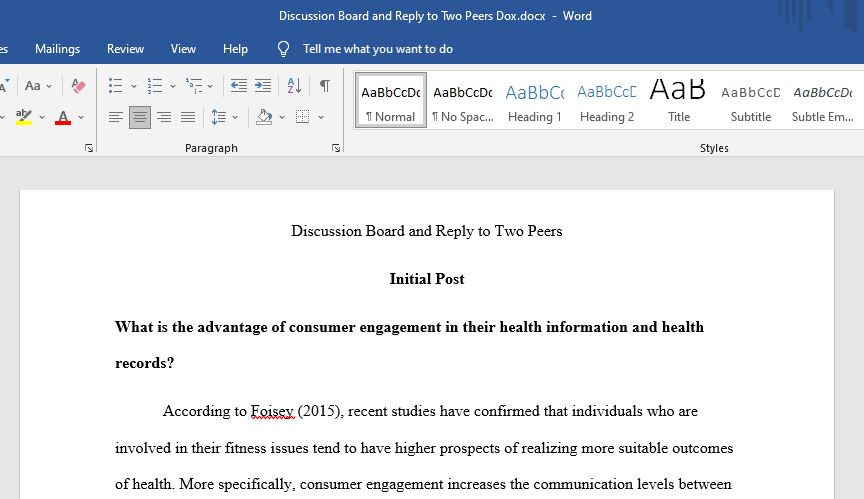What is the advantage of consumer engagement in their health information and health records?
Initial Post:
What is the advantage of consumer engagement in their health information and health records? What is the advantage of a patient portal for the patient? How can a patient portal benefit the healthcare organization?.
- The advantage of consumer engagement is very important because it allows the patient to be more in control of their life and their health and helps the doctors learn the patient more. The more engaged the patient is, the better the outcomes will be.
- A patient portal is a website that patients can get 24-hour access to personal health information anywhere with internet. Advantages for a patient portal is better communication, greater focus on patient care, optimize medical office workflow, better patient-physician relationships, and improve clinical outcomes. Online you can request refills, check benefits, complete forms, ask questions, etc.
- Benefits for healthcare organizations include enhanced patient-provider communication and empowerment. Patients get better one on one care with the patient in their own comfortable setting.
References:
Electronic health reporter. Visit Scott Rupp’s website. (n.d.). Retrieved September 14, 2021, from https://electronichealthreporter.com/patient-portals-security-concern-or-effective-tool/#:~:text=While%20patient%20portals%20add%20risk%2C%20they%20also%20confer,portals%20can%20also%20enable%20better%20outcomes%20for%20patients.
With the advancement in technology over the last couple of decades, access to health records has become readily available via the patient portal. The ease of access for patient health records has brought about more patient engagement ultimately leading to increased provider-patient communication, increased access to credible sources to benefit patient knowledge in regard to their health, and increased likelihood that patients will provide follow up after their appointment if needed or after lab work (Biedermann & Dolezel, 2017). This increase in patient engagement about their health records has been a result of the implementation of patient portals being used in healthcare practices.
Patient portals provide patients with secure access to the entirety of their medical records through an electronic database. Some information the patient may have access to consists of their vaccination records, doctor notes, lab results, prescription history, and discharge information. In addition to providing access to medical records, the patient portals also work as a communication device between provider and patient with secure messaging, prescription refill, scheduling, and bill payment (Dendere et al., 2019). The development and implementation of patient portals have become much of a staple for access to patient health records within healthcare.
Not only do patient portals provide patients with ease of access to their health records and secure patient-provider communication, but it also provides benefits to the healthcare organization. With patients having more involvement in their healthcare, they may also notice errors within the EMR, or system glitches which can then be reported back to the organization to be looked over (Tang et al., 2006). By allowing for the patient to have a more direct way to receive their visit summaries, prescription list/history, lab results, etc., the doctors can focus more on patient care and treatment plan and less on the “housekeeping” work. With an increase in quality patient care, the organization may see an increase in individuals utilizing the services. Patient Portal and EMR’s benefit practices within the same system and practices in different systems due to patients and providers being able to easily access any necessary records for treatment (Dendere et al., 2019).
Resources:
Dendere, R., Slade, C., Burton-Jones, A., Sullivan, C., Staib, A., & Janda, M. (2019). Patient Portals Facilitating Engagement With Inpatient Electronic Medical Records: A Systematic Review. Journal of medical Internet research, 21(4), e12779. https://doi.org/10.2196/12779
Biedermann, S. & Dolezel, D. (2017). Introduction to Healthcare Informatics, Second Edition. [Purdue University Global Bookshelf]. Retrieved from https://purdueuniversityglobal.vitalsource.com/#/books/9781584265283/
Tang, P. C., Ash, J. S., Bates, D. W., Overhage, J. M., & Sands, D. Z. (2006). Personal health records: definitions, benefits, and strategies for overcoming barriers to adoption. Journal of the American Medical Informatics Association : JAMIA, 13(2), 121–126. https://doi.org/10.1197/jamia.M2025
Requirements: See rubric | .doc file
Answer preview:
word limit:404

